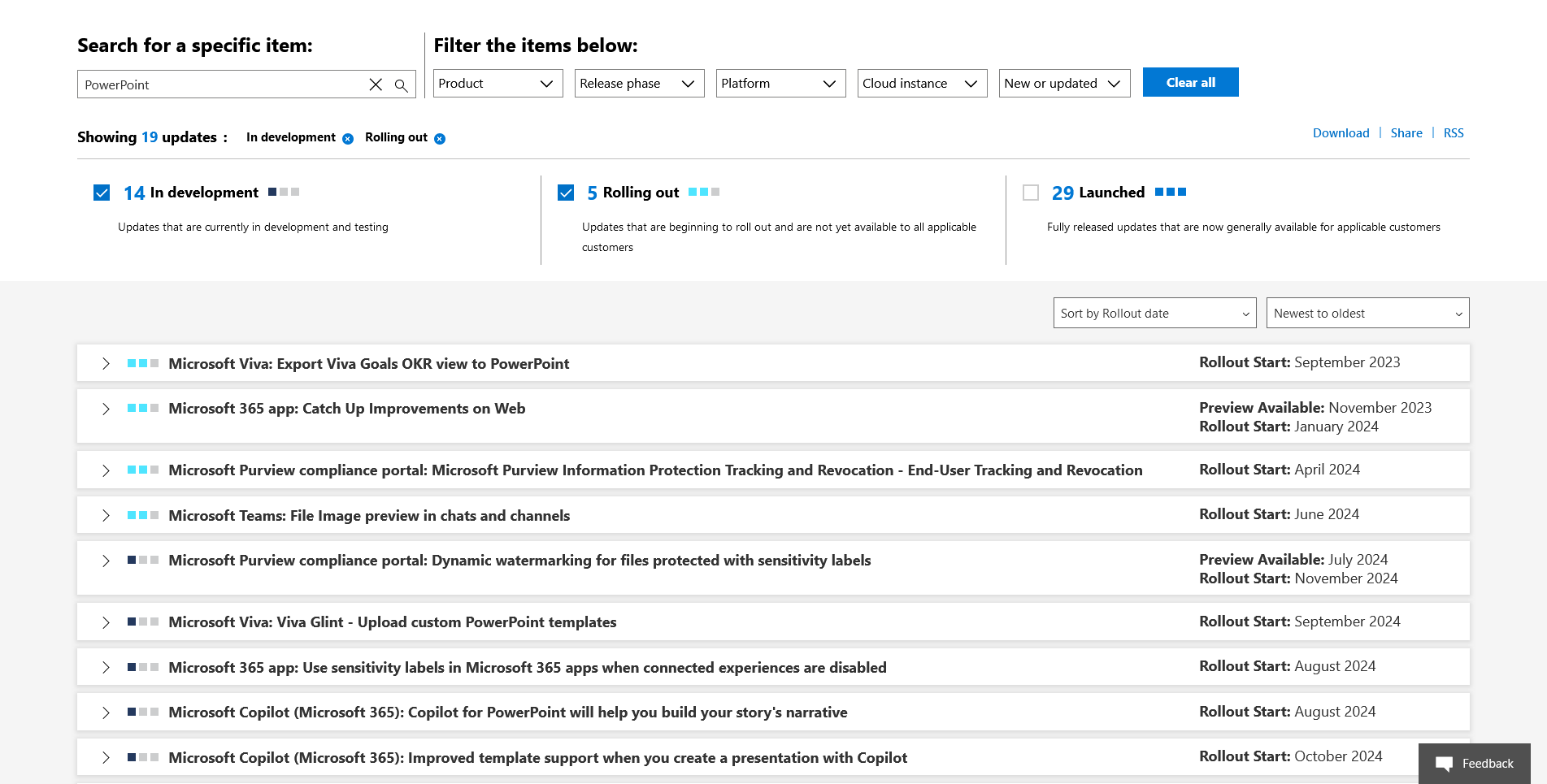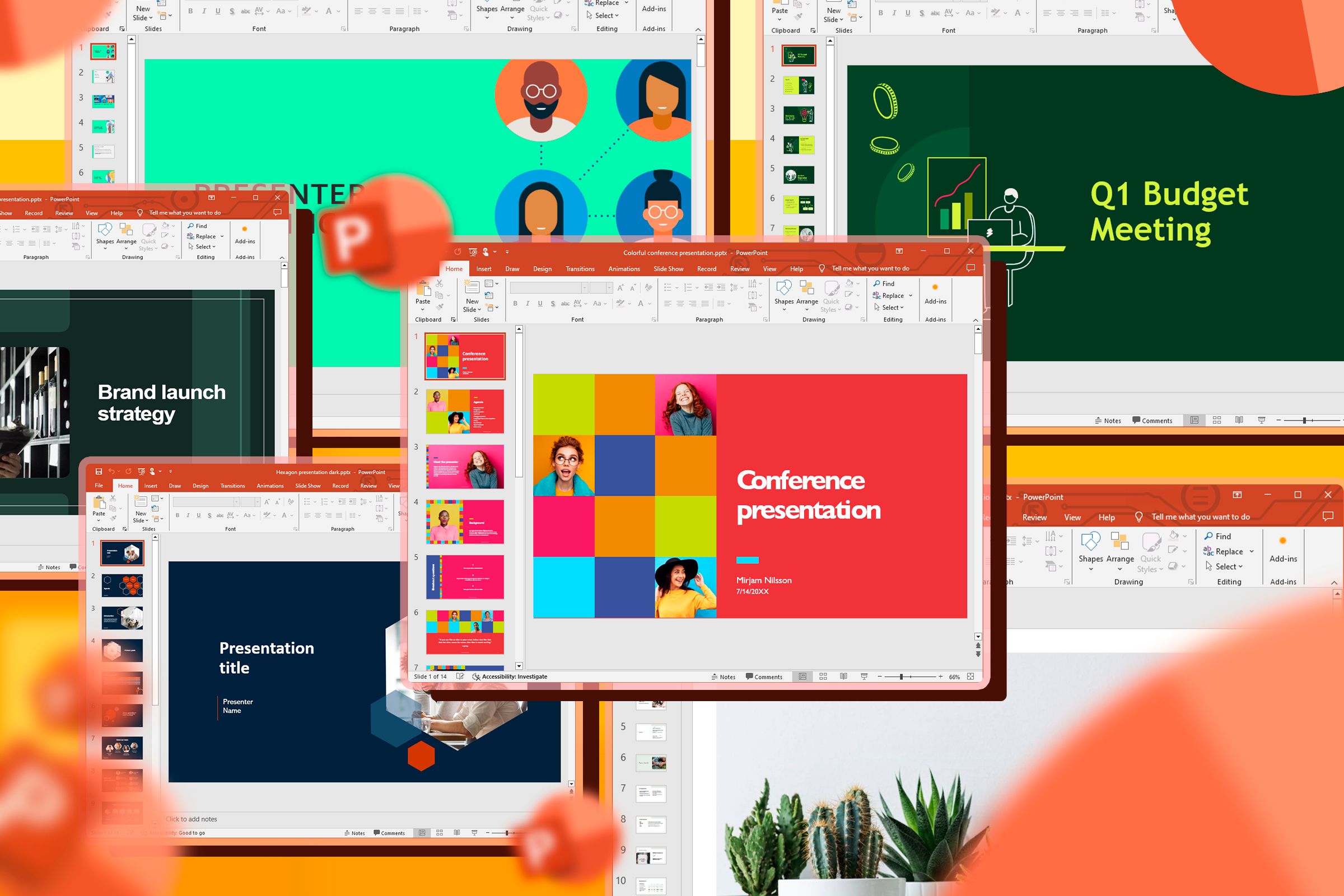Summary
- PowerPoint may not receive updates as frequently as other productivity apps, but it remains versatile and powerful for various uses.
- Despite emerging trends suggesting otherwise, audiences still value good presentations with engaging visuals.
- After 38 years, Microsoft still includes PowerPoint in its latest packages, indicating its ongoing importance and relevance to customers.
PowerPoint is a desktop productivity veteran, a constant in Microsoft’s ever-changing suite of apps since 1987. However, Microsoft consigning some of its well-known programs to the scrapyard over the past couple of years made me wonder: will PowerPoint reach its 40th birthday?
You Could Argue That PowerPoint Is Dying
Even just glancing at the Microsoft 365 Roadmap gives you an insight into the scale of work going on behind the scenes to update Microsoft’s productivity apps and cloud services. Indeed, at the time of writing, there are 820 updates either currently in development and testing or rolling out to customers.
However, typing “PowerPoint” into the Roadmap search box returns just 19 results, all of which relate more closely to other apps or Copilot. In fact, none of the changes listed are intended exclusively for the PowerPoint app. Compare this to Outlook, which is mentioned in 128 updates that are either in their testing or rolling-out phases.
Does this mean that Microsoft is deprioritizing PowerPoint? Does the company see it as an old-fashioned program that doesn’t align with today’s streamlined productivity environment?
Adding further fuel to the PowerPoint incinerator, when Office 2007 was released, PowerPoint had lost its Record A Macro capability, a tool for automating repetitive tasks. Indeed, as PowerPoint progressed, Microsoft didn’t feel it was worth advancing the record macro function, a further nod to the company’s indifferent attitude towards the program. On the other hand, many people still record macros in Excel and Word today, suggesting that Microsoft prioritizes its more popular apps over those used by fewer customers.
Aside from Microsoft’s perspective on its slideshow program, emerging trends in the fields that are traditionally more likely to use PowerPoint suggest that the stand-up-and-talk-in-front-of-a-presentation-type approach is heading out of fashion. For example, in education, didactic teaching is increasingly seen as “dreadfully predictable and deadeningly banal,” with a more student-centered approach being “more effective and interesting.”
In 2004, Jeff Bezos banned PowerPoint at Amazon, saying, “Powerpoint-style presentations somehow give permission to gloss over ideas, flatten out any sense of relative importance, and ignore the interconnectedness of ideas.”
He preferred the idea of sharing two to six pages of Microsoft Word-produced memos at the start of meetings, giving people half an hour of silence to absorb the content, and then discussing the information in an open forum format. Innovative approaches like this by powerful people like him could inspire others to follow the same path, reducing the need for PowerPoint over time.
The final nail in the coffin is that PowerPoint isn’t the only presentation product out there. For example, many people prefer using Google Slides, thanks to the program’s ease of collaboration, integration with other Google tools, and more straightforward user interface. Apple’s Keynote is another alternative, offering smoother transitions, better multimedia elements, and more modern templates.
In Reality, PowerPoint Still Has Legs
Earlier, I mentioned the lack of significant updates in the Microsoft 365 Roadmap for the coming year, noting that Microsoft might be placing its trusty slideshow program on the back burner for the foreseeable future. However, is it not the case that PowerPoint isn’t receiving updates simply because it doesn’t need them? In reality, I’m not sure what major features would make it better than it already is, other than maybe just a modernization or simplification of its user interface.
Sticking on the topic of Microsoft’s priorities, it’s worth remembering that PowerPoint made the cut for Office 2024, one of just four apps (alongside Excel, Word, and OneNote) that Microsoft deemed important and popular enough to be included in this one-off package of programs. Clearly, Microsoft still sees it as a necessary and valuable tool for its customers.
PowerPoint is more multipurpose than it receives credit for, offering many uses outside boardrooms and classrooms. For example, creative leaders might use it to make training more purposeful, wedding planners can create a rolling gallery of lovebird pics, and students can find ways to use it as a self-study tool. Even when used in more traditional contexts, PowerPoint helps meetings stay on-topic, guides presenters and audiences, and can visualize complex concepts for different types of learners.
While it seems like an old-fashioned approach, standing up in front of a screen and speaking to your audience still has great value—there’s a reason why that’s been the go-to approach for so many years! According to the Visual Teaching Alliance (via eLearning Industry), 90% of the information transmitted to the brain is visual, graphics are processed 60,000 times faster than text, and the human eye can register 36,000 visual messages an hour.
Coupling these stats with the fact that PowerPoint has been the global presentation software leader for some time, it seems difficult to justify the view that PowerPoint will be a thing of the past any time soon.
PowerPoint has evolved in the face of increased competition. For example, in 2016, Microsoft added the Morph transition to compete with Prezi’s zooming uniqueness. Later that year, it gained the impressive Designer tool to make presentations catch the eye and be more unique. Personally, having previously used Google Slides in the classroom and given Keynote a try as an Apple customer, I still prefer PowerPoint for its comprehensiveness and versatility.
Is PowerPoint On Its Way Out?
Looking at both sides of the coin, I think it’s fair to say no, PowerPoint is not on its way out.
Pretty much every suggestion that PowerPoint will soon be a program of the past—it has no significant updates scheduled, it faces increased competition, it’s unfavorable to Microsoft, and trends are changing—is heavily outweighed by convincing counterarguments—it doesn’t need any updates, it’s more powerful and versatile than its competition, it’s included in Office 2024, and visual presentations are still very relevant today.
Since PowerPoint is here to stay, make sure you familiarize yourself with the best things to include in a professional presentation, the most useful buttons to have on your quick access toolbar, and different things you can do to keep your PowerPoint file running smoothly.






